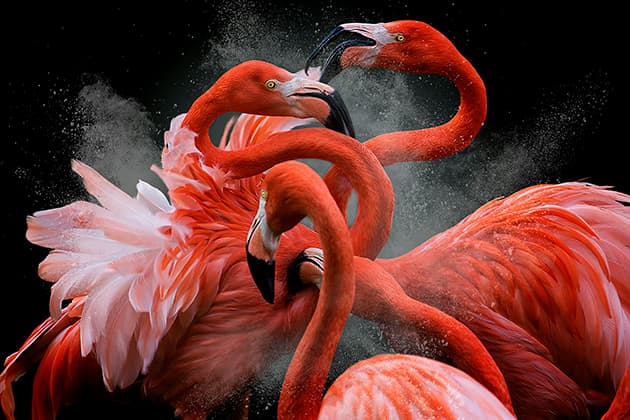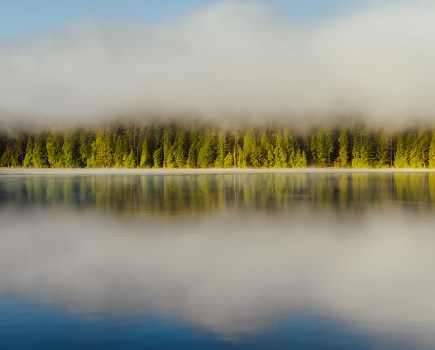Now in its third year, Bird Photographer of the Year is back with more entries than ever and an exceptional standard of photography. This global competition attracts entrants from more than 6o countries around the world, showcasing a huge and beautiful diversity of bird species. This year the grand prize of £5,000 goes to a Peruvian photographer, Pedro Jarque Krebs, for his explosive image of American Flamingos entitled ‘Black Friday’.
Competition organiser and judge Rob Read says, ‘Black Friday is an image which is nothing short of explosive; it made an instant and lasting impression on a panel of judges who are determined to push the boundaries of perceived convention. This is photographic punk rock.’
AP got the opportunity to speak to some of the winners to find out what their top tips are for aspiring bird photographers. If you think you’ve got what it takes, the 2019 competition is now open for entries!
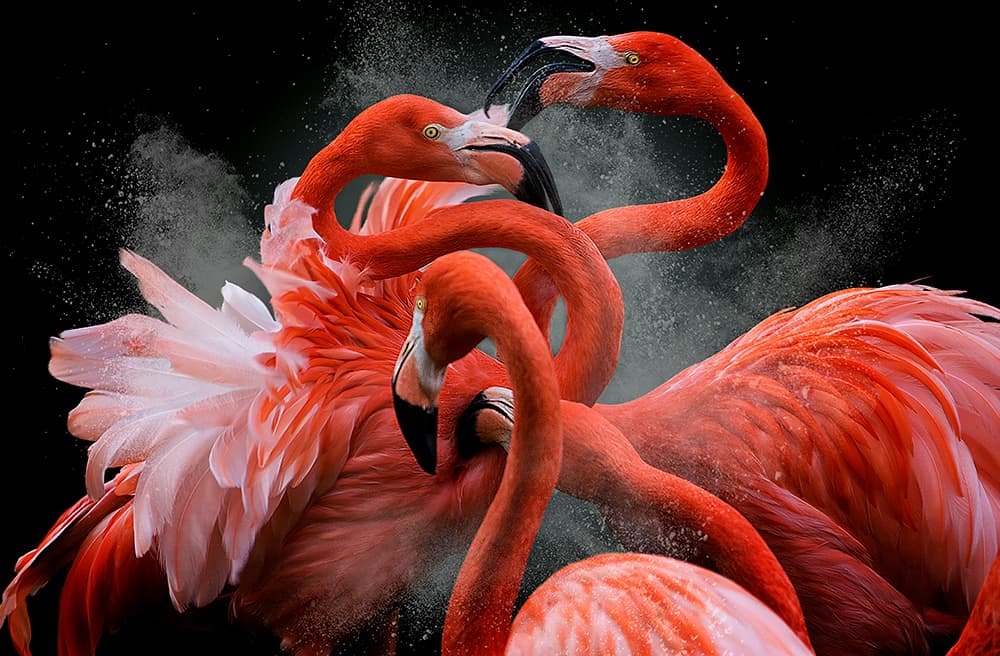
Credit: Pedro Jarque Krebs/Bird Photographer of the Year
Black Friday by Pedro Jarque Krebs, Peru
Creative Imagery – Gold award winner and Bird Photographer of the Year winner 2018
‘This image depicts a group of intensely pink American Flamingos arguing. I took this photo in Madrid, Spain, at a flamingo sanctuary where they live in semi-liberty. I have called this image Black Friday because it reminds me of shopping squabbles that take place on that infamous day.’
Pedro’s top tips
- Bird photography requires infinite patience and planning. Study your subject and be prepared to sit and wait.
- The major benefit of digital is ring off hundreds of images, so don’t be afraid to take too many photos.
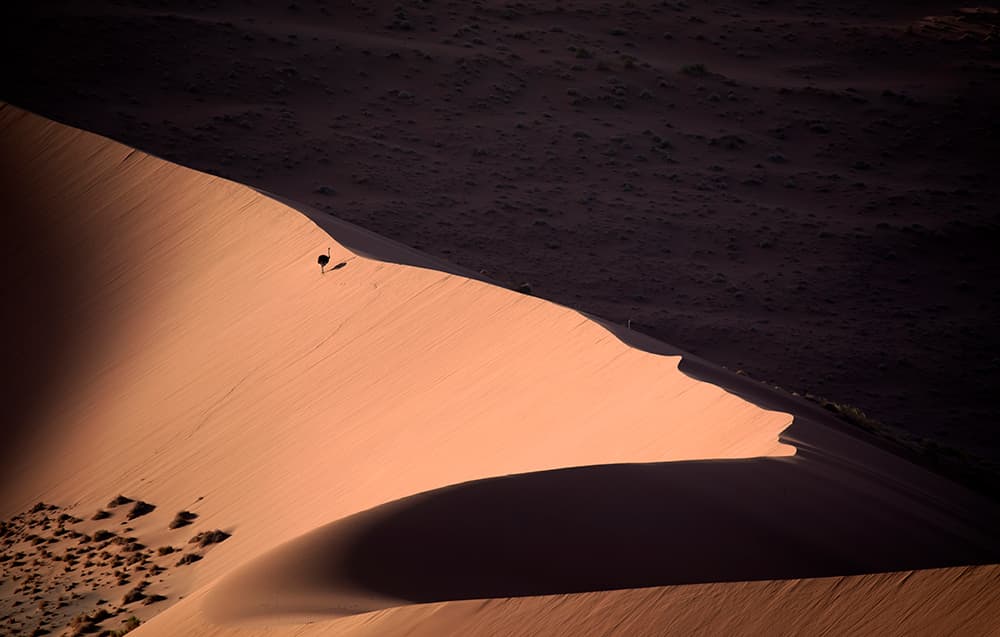
Credit: Salavdor Colvée/Bird Photographer of the Year
Ostrich World by Salvador Colvée, Spain
Birds in the Environment – Gold award winner
‘I saw this Common Ostrich isolated in a “sea” of dunes. I wanted to capture an image of it in such a harsh environment. This is the result of the bird caught between the light and shades of the dunes.’
Salvador’s top tips
- The most natural picture, without disturbing the animal and not being intrusive, is the best picture.
- While it is worthwhile researching a species before photographing them, if you happen to have a random casual encounter, the best results will often come from a bird portraying a natural gesture or behaviour if they’re left undisturbed.
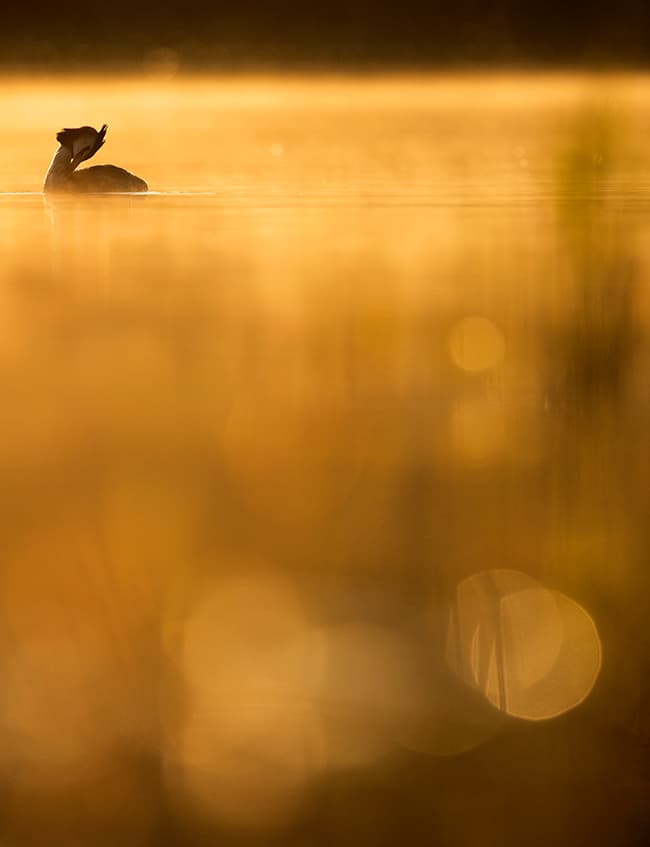
Credit: Johan Carlberg/Bird Photographer of the Year
Crested Grebe Morning by Johan Carlberg, Sweden
Young Bird Photographer of the Year 2018
‘I set my alarm for 3am. When I arrived at the lake I worked out that the best position was from the west side, which meant a beautiful backlit sunrise. The Great Crested Grebes caught my attention with their graceful and interesting behaviour, and with the best light that nature can offer. It was truly a glorious moment.’
Johan’s top tips
- Shooting in aperture priority mode with a wide aperture to achieve fast shutter speeds is very efficient when your subjects are on the move.
- It’s important to show gratitude and respect for your subject. If you feel connected to your subject, it will show.
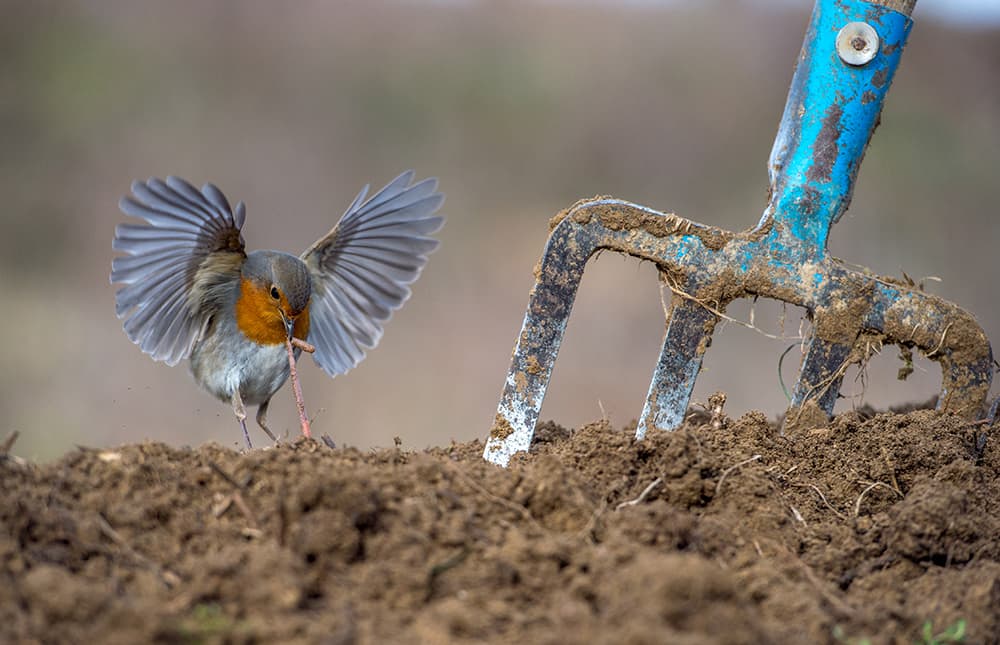
Credit: Nikos Bukas/Bird Photographer of the Year
Robin’s Snack by Nikos Bukas, Greece
Garden and Urban Birds – Gold award winner
‘While I was turning over the soil of a small field in my village, Ekklisoxori, in North-west Greece, I had two goals in my mind. To prepare the earth for the new crop of potatoes and to set up my hide in order to photograph the robins, that would appear in search for easy prey. The image I had in mind included a forgotten pitchfork, the element of the human’s presence in the photo and a robin, that was trying to snatch a worm.’
Nikos’s top tips
- You don’t need to buy a super-telephoto lens. My 70-200mm f/2.8 is more than adequate for me as I spend a lot of time in hides. My subjects are not aware of my presence and as a result, end up quite close to me.
- Observe your subject’s daily routine and you will discover many photographic opportunities.
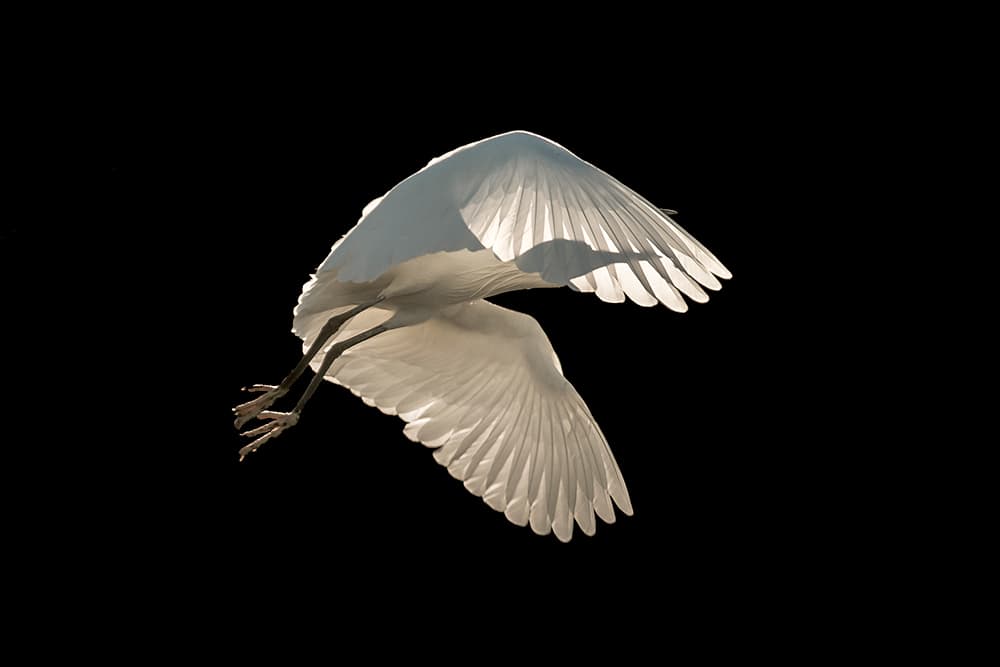
Credit: Sienna Anderson/Bird Photographer of the Year
Freedom by Sienna Anderson, UK
Birds in Flight – Gold award winner
‘I visit Hersey Nature Reserve most days and on one occasion I startled a Little Egret as I arrived and it startled me. I managed to take a few photos of it in flight and loved the black backdrop. The next day I returned late in the afternoon to make the most of the light. I had a vision but when I saw the photo on my screen I was absolutely delighted.’
Sienna’s top tips
- Your shutter speed needs to be at least 1/2000sec when shooting large birds in flight to ensure you capture the entire bird in sharp focus.
- Set the autofocus to continuous, so that once you’ve locked focus, your camera will track your subject
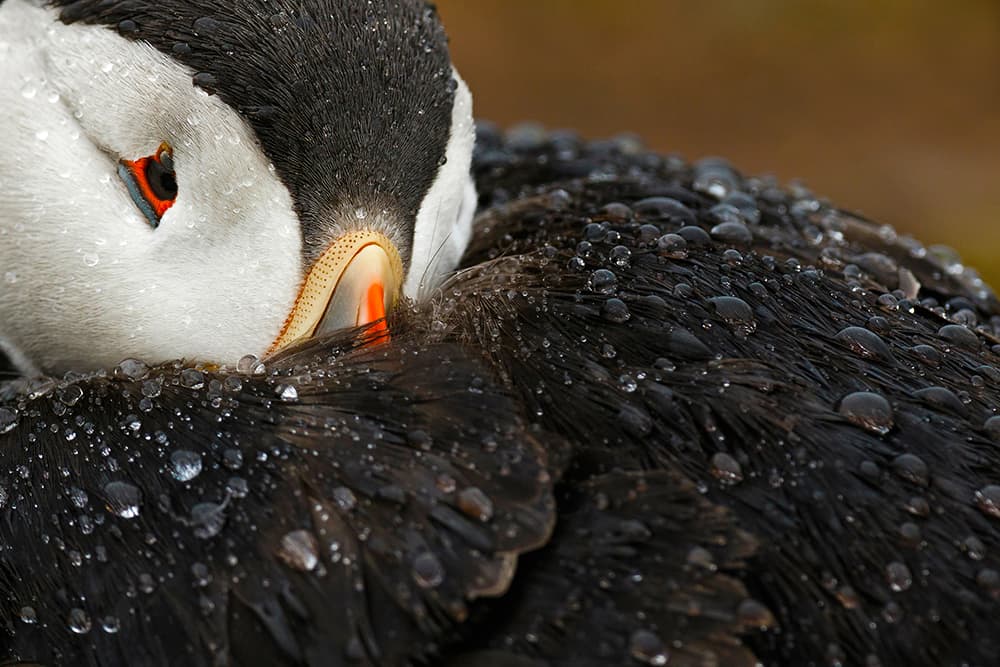
Credit: Mario Suárez Porras/Bird Photographer of the Year
Comfortably Numb by Mario Suárez Porras, Spain
Attention to Detail – Bronze award winner and People’s Choice award winner
‘Last summer I visited Skomer Island on a rainy day. I thought I would try some intimate portraits of puffins in the rain. As the rain got heavier, I was in the position I wanted. The rain drops collected on the bird’s plumage and I was lucky it did not shake before I took the image, as the small droplets of water give an extra dimension to the portrait.’
Mario’s top tips
- Be prepared to lie down on the ground to get to your subject’s eye level for a more intimate portrait.
- Make use of the natural elements between you and your subject for creative blur.
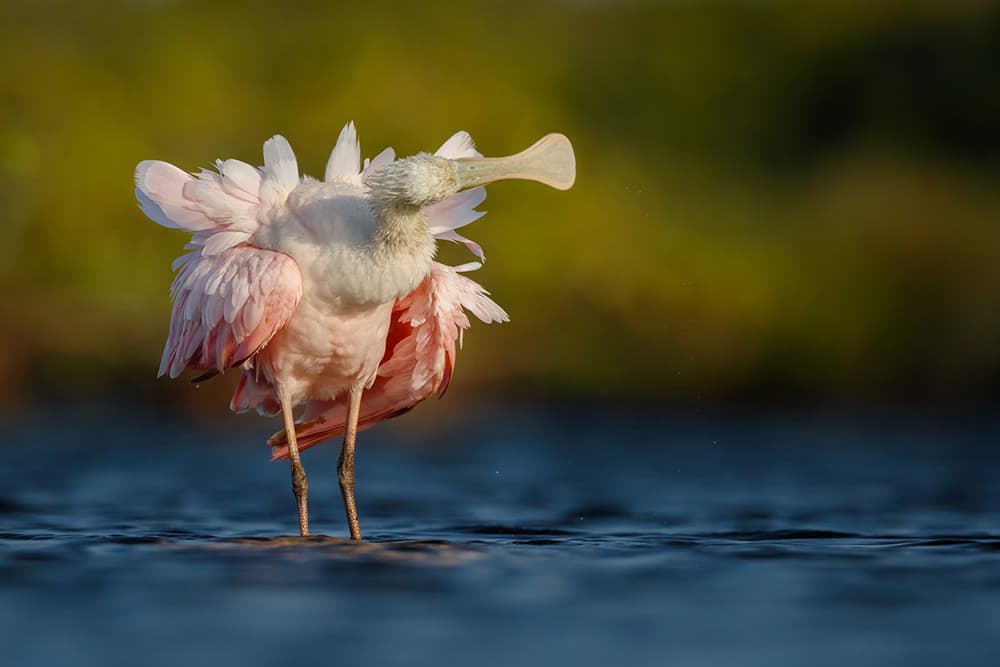
Credit: Petr Bambousek/Bird Photographer of the Year
Roseate Spoonbill by Petr Bambousek, Czech Republic
Bird Behaviour – commended and Best Portfolio winner
‘Roseate Spoonbills are among the most beautiful wading birds in Florida. I found a place where several were looking after their feathers. I got as low as possible at the edge of the lagoon. After preening, they shook their bodies and made some funny poses. This moment is captured in this picture.’
Petr’s top tips
- When shooting water birds get as low to the ground as possible.
- If it’s not possible to lie down, flip your LCD screen (if possible) to get the low-angle view.
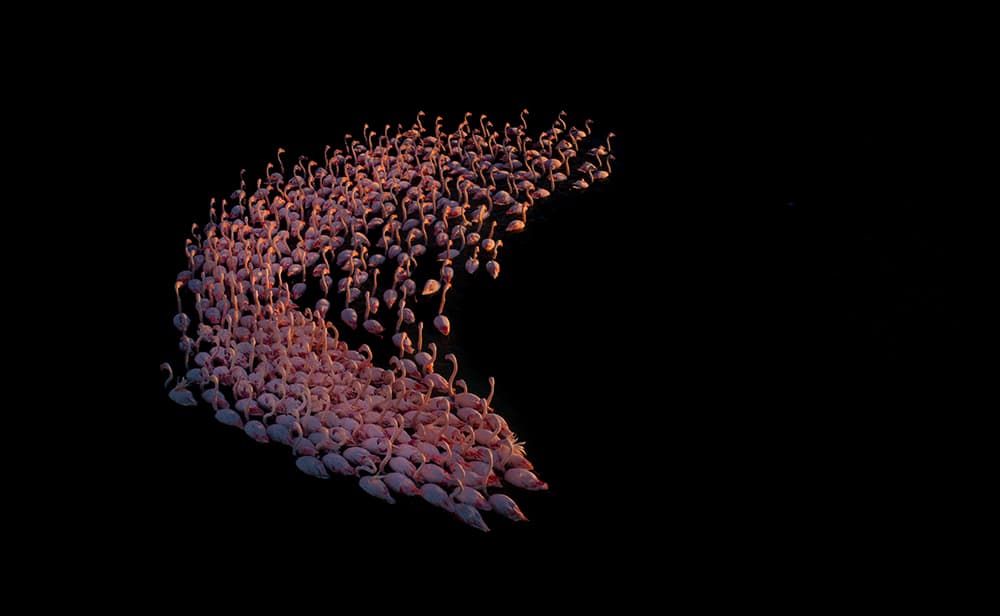
Credit: Fahad Alenezi/Bird Photographer of the Year
Pink Crescent by Fahad Alenezi, Kuwait
Creative imagery – Silver award winner
‘Greater Flamingos are present all year round in Kuwait, although they move north in March to nest. When breeding has finished, they move south again and at this time they gather in big numbers. There was a small group of them walking together in a shape of a crescent and this got my attention. I used my drone to take this beautiful shot of them.’
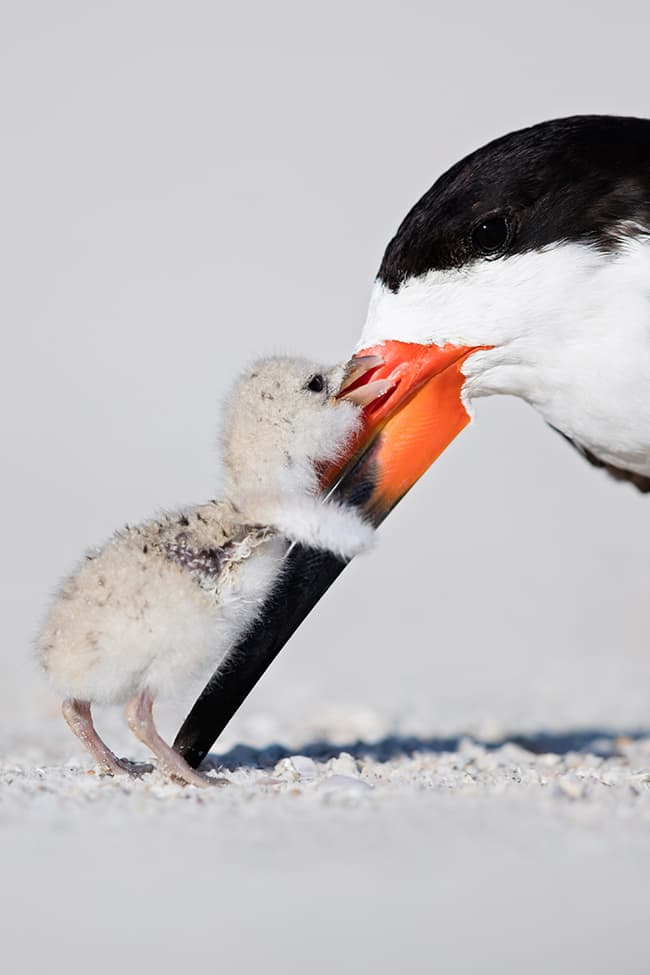
Credit: Thomas Chadwick/Bird Photographer of the Year
Black Skimmer and Chick by Thomas Chadwick, USA
Bird behaviour – bronze award winner
‘I have been photographing a little-known Black Skimmer colony for years and this is my favourite photo taken. Every year I select a nest when the parents are sitting on eggs, and follow that same nest until the young edge. The reason I choose one nest is because colonies are chaotic; you will miss shots by pointing the lens at hundreds of birds. I got into position one hour prior to sunrise and lay there for another hour, then a parent flew in to the chick and fed it. It was inches away from me, so I could not get the feeding photo. However, I captured it running up to the parent and displaying the behaviour pictured.’
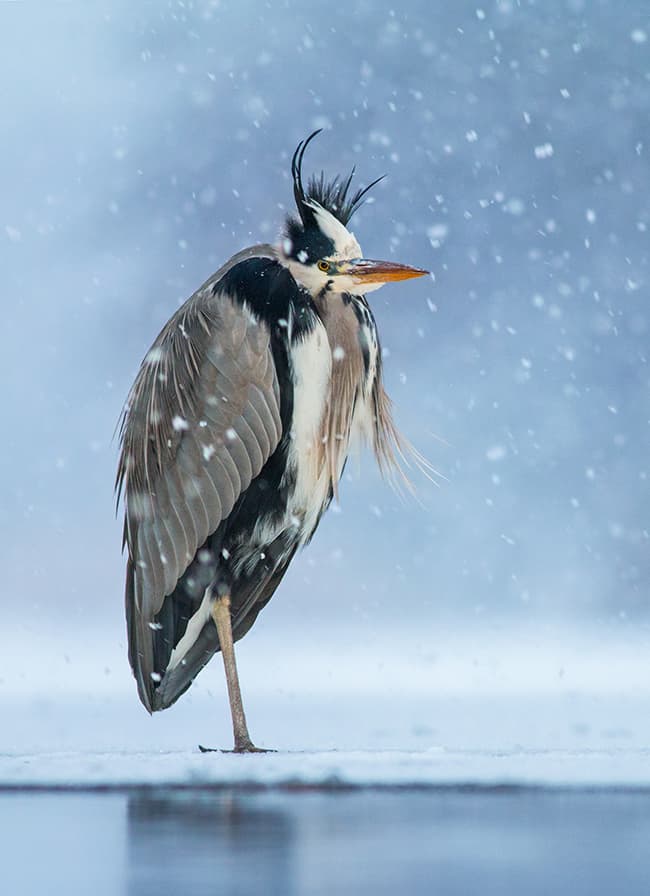
Credit: Ivan Sjögren/Bird Photographer of the Year
Grey Heron in Falling Snow by Ivan Sjögren, Sweden
Best portrait – bronze award winner
‘These Grey Herons have become celebrities in the birding world. They are a part of a very special population that chooses to stay in their breeding grounds all year round. I took this image on a day where I chose to head out even though the weather forecast said heavy snowfall. I wanted to portray the conditions in which these birds chose to stay. The snow was falling very rapidly which made it hard for me to get an image where single snowflakes where visible. The relatively dark heron was silhouetted against the bright background. I found a solution when a street lamp suddenly turned on due to the fading light. The heron that stood below was lit up, which reduced the contrast. I waited for a moment when the wind gave up to let the snow fall.’

